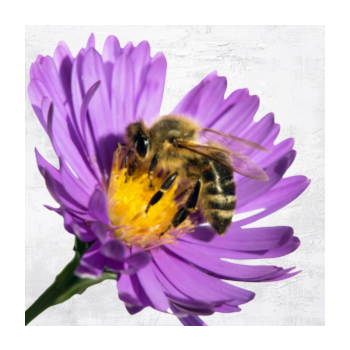


Sign-up for {N}power to get exclusive discounts, newsletters, members-only features, and more!
 Denver - Design District - Alameda and Broadway
Denver - Design District - Alameda and Broadway
368 S Broadway
Denver, CO 80209
United States
 Preferred Store:
Select a Store
Preferred Store:
Select a Store

It’s the month of love! What better time to show the planet some extra care? For the love of the bees, the trees, and all the in-betweens, let us take time to appreciate all the extraordinary flora, fauna, and fungi. And we mustn’t forget ourselves! What’s an easy way to show yourself (and the bees!) some love? Choose organic to keep systemic pesticides out of our ecosystems and out of our bodies. Systemic pesticides are a particularly nasty type of pesticide that are designed to permeate plant tissue—and they don’t wash off. No love for that!
 For millennia, humans have been conjuring up creative ways to navigate and manage concerns around insects and animals with appetites for our crops. For all the thousands of years we have spent working with nature, it’s only within the last hundred years or so that things have taken a turn for the toxic. During the first World War, research on nerve agents and explosives led to the use of arsenic and cyanide as insecticides on orchards. During the second World War, the first synthetic and systemic pesticides were produced, including organophosphates, and for the first time their use became widespread. In the 1980’s, the ominous — and systemic — neonicotinoids were invented.1
For millennia, humans have been conjuring up creative ways to navigate and manage concerns around insects and animals with appetites for our crops. For all the thousands of years we have spent working with nature, it’s only within the last hundred years or so that things have taken a turn for the toxic. During the first World War, research on nerve agents and explosives led to the use of arsenic and cyanide as insecticides on orchards. During the second World War, the first synthetic and systemic pesticides were produced, including organophosphates, and for the first time their use became widespread. In the 1980’s, the ominous — and systemic — neonicotinoids were invented.1
Like us, plants have complex systems for moving nutrients and water through their “bodies.” One of the reasons systemic pesticides are particularly concerning is that there is absolutely no possibility of washing them off because the pesticide is taken up into the body of the plant. These pesticides aren’t residues on our fruits and veggies—they’re in them. Yikes! Even fruits we generally consider to be lower risk for pesticide residues, like honeydew melon,2 have been shown to contain systemic pesticides within the fruit flesh.3 4 This is why it’s always important to choose organic whenever possible.
 Neonicotinoids are widely used in conventional farming. These systemic pesticides are applied to seeds and saplings. Because these toxins are taken up into the body of the plants, including the nectar and pollen, they endanger non-targeted species, especially pollinators.5 6 In 2008, bee populations were so drastically devastated by neonicotinoid corn and sunflower seed coatings that they were banned in Italy.7 In addition to bees, a 2021 study showed that the already endangered monarch butterfly is put in greater danger by neonic-coated seeds that reduce larvae survival rates.8 And it doesn’t stop at pollinators. The soil, surrounding waterways, and all the biodiverse ecosystems that make up and surround a farm are put at great risk of harm. Organic agricultural standards refuse systemic pesticides, but organic is about so much more than refusing synthetics and systemics, as the Rodale Institute states, “organic agriculture is a production system that regenerates the health of soils, ecosystems, and people.”9
Neonicotinoids are widely used in conventional farming. These systemic pesticides are applied to seeds and saplings. Because these toxins are taken up into the body of the plants, including the nectar and pollen, they endanger non-targeted species, especially pollinators.5 6 In 2008, bee populations were so drastically devastated by neonicotinoid corn and sunflower seed coatings that they were banned in Italy.7 In addition to bees, a 2021 study showed that the already endangered monarch butterfly is put in greater danger by neonic-coated seeds that reduce larvae survival rates.8 And it doesn’t stop at pollinators. The soil, surrounding waterways, and all the biodiverse ecosystems that make up and surround a farm are put at great risk of harm. Organic agricultural standards refuse systemic pesticides, but organic is about so much more than refusing synthetics and systemics, as the Rodale Institute states, “organic agriculture is a production system that regenerates the health of soils, ecosystems, and people.”9
During this month of love, let us remember to show the planet some love, too. Let us say NO to systemic pesticides. Choose love, choose organic!



Sign-up for {N}power to get exclusive discounts, newsletters, members-only features, and more!

